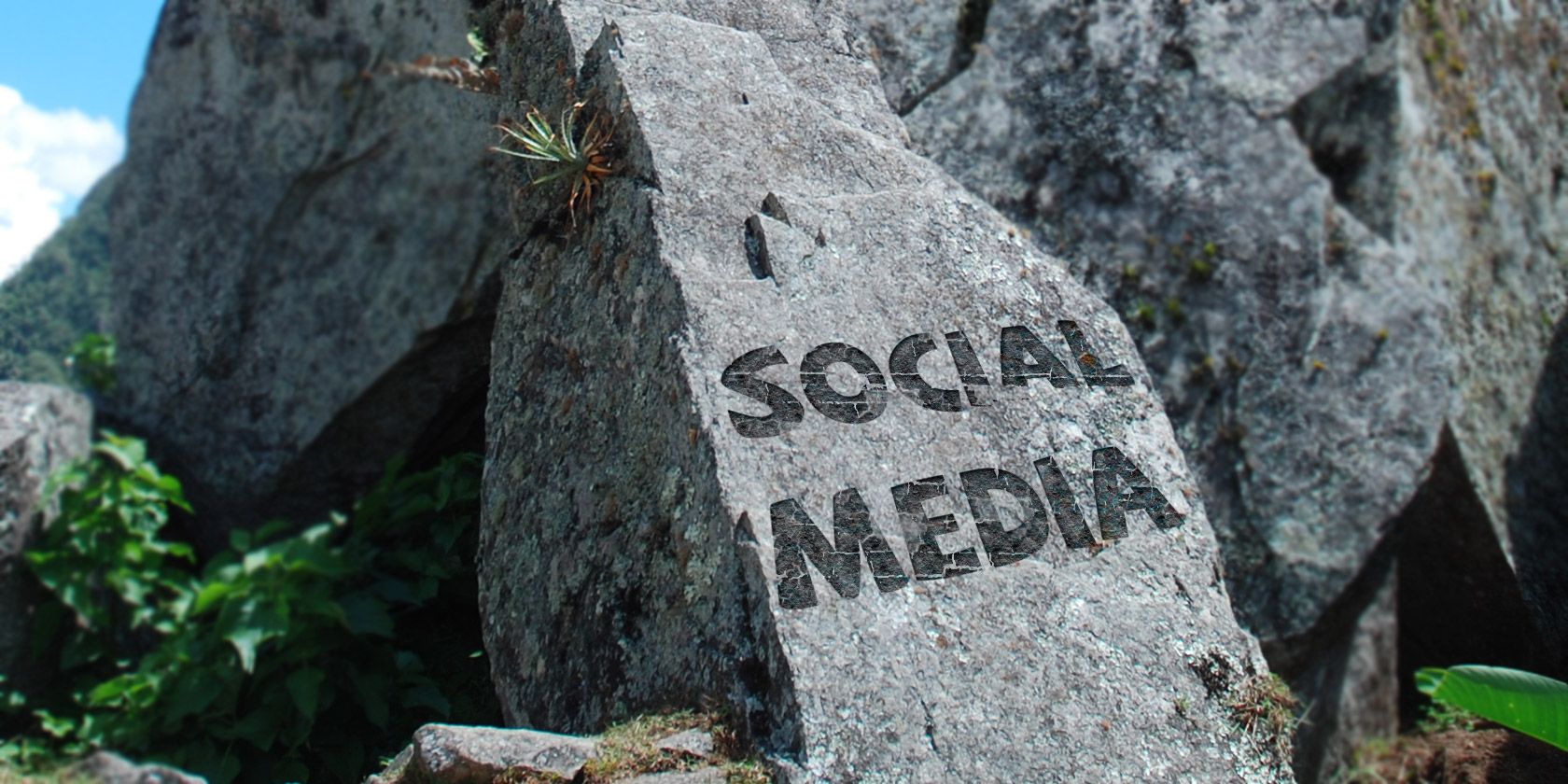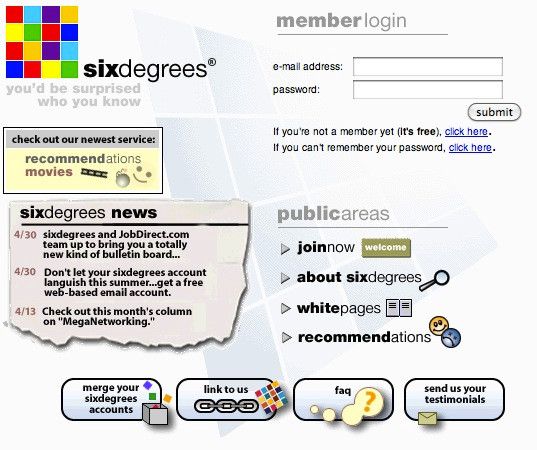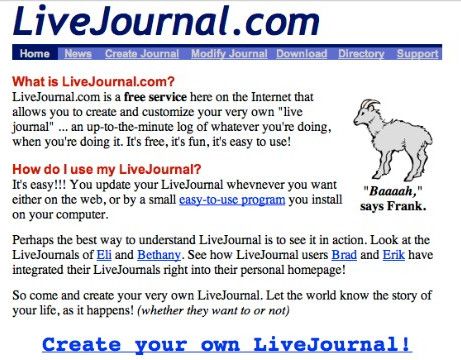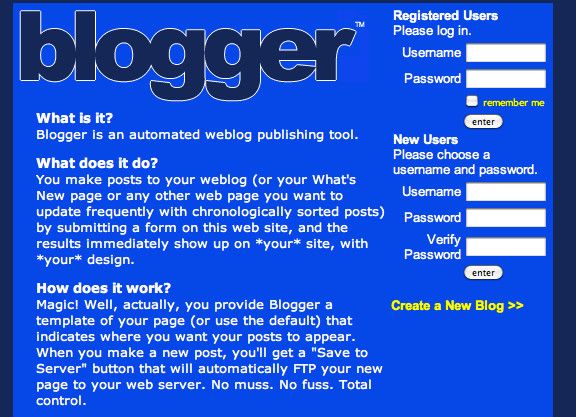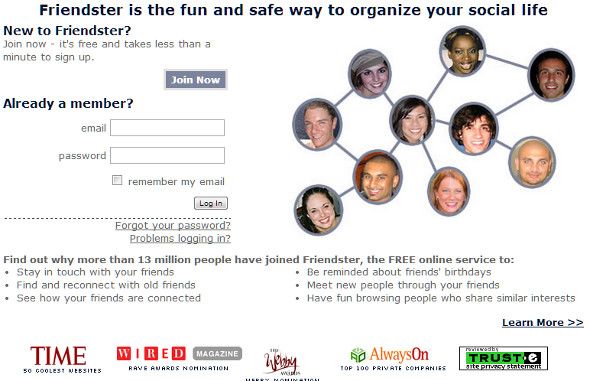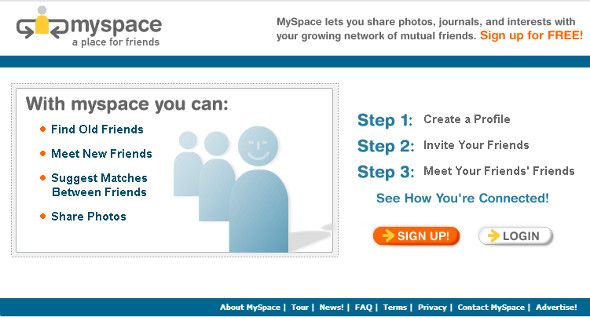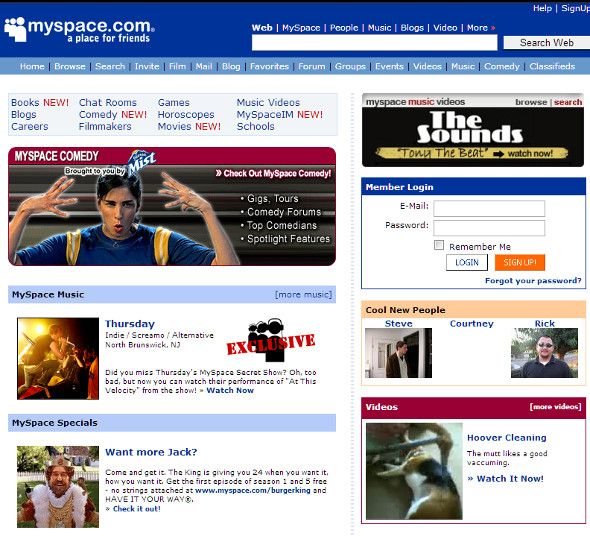Today, Facebook dominates social media. The world's largest social network boasts over 1 billion users, an impressive fraction of the 2.5 billion people who have Internet access worldwide. Google+ has also breached the 1 billion mark, but in terms of logins per day is quite far behind the champion.
The dominance of Zuckerberg’s juggernaut makes it easy to forget there was a time when social media was considered an open field, ready for any to stake their claim. And many did, some years before Facebook entered the fray. So what were those early social networks – and what killed them?
The Beginnings
Social networks originate from early forms of online communication such as the Bulletin Board System (BBS) and, later, Internet Relay Chat (IRC). These exhibited few of the features that make social networks identifiable today; there were generally no profiles, no news feeds, and no photos. But to focus on features is missing the point. Early online communication created networks by simple virtue of their niche; a large IRC chat, for example, might contain a few hundred people every night, and getting to know them happened by the act of using chat.
The World Wide Web and a growing online population stole the show from IRC and BBS communities in the mid-90s. Web pages were more attractive and much easier for people to visit, and most users new to the Internet flocked to them rather than the older, more interactive forms of online communication. This resulted in an explosion of content and the founding of hosted web services such as Geocities, but it also made the Internet a one-way conversation. Visiting a website was easy, but making connections with both offline and online friends was difficult.
A possible solution arrived in 1997 with SixDegrees.com, a social network named after "six degrees of separation" — the idea that everyone is connected to everyone else by no more than six people. SixDegrees created connections between individuals who unknowingly had a mutual friend (or friend of a friend) and included user profiles, a messaging system, and forums. It later added other features such as whitepages and a job board, though these never gained significant popularity.
While it did manage to hit a million users, SixDegrees died in 2001 after it failed to control spam, attract new users, or find a way to constantly make money. Very few people online today know the site ever existed, and only a few screenshots remain to prove its existence.
Blogs Hit It Big
SixDegrees was arguably a site before its time. In 1997 many people were still discovering the wonders of the web, and while Internet use was growing, most people still did not have access to it. A more natural evolution of online socializing arrived with the rise of blog networks like Livejournal, and this was the dominant form of communication (alongside online forums) for several years.
At their core, blog networks are an attempt to give web pages the opportunity for interaction. Livejournal, founded in 1999, was revolutionary for its time because it provided its users an easy way to post their own content and respond to what others were posting (the comments feature was added in April of 2000). In December of 2000 the site added communities, which allows like-minded users to congregate and more easily track each other's posts.
Livejournal hit one million users in 2003, which may have been its peak in North America. The site is global, however, and remains particularly popular in Russia, where it's said to have over 2 million users.
Of course, Livejournal wasn't the only early blogging platform, and certainly isn't the only one alive today. Blogger also started in 1999 and, now under Google’s ownership, remains one of the 50 most popular sites in the world. WordPress.com is the 15th most popular site worldwide – and that doesn't even begin to count self-hosted blogs, a phenomenon WordPress made possible.
But while blogs remains popular, it's arguable that blogging as a form of social network has lost relevance, even if blogging as a form of web publishing remains strong. Most modern blog platforms have a thin layer of community features and focus on promoting ease of use instead of making connections with others. Some bloggers even disable comments, an option that puts the final nail in blogging’s relevance as a means of networking.
Friendster: The First Modern Social Network
Blogs were revolutionary, but they didn't entirely solve the problem of connecting with others online. A blog post is static, often wordy and offers little value to people who are already personally acquainted but also want to connect and converse online. SixDegrees.com might have filled that gap, but by the time blogging hit its peak that site was little more than a memory.
This presented an opportunity for another up-and-comer, Friendster, which was founded in 2002. Friendster is arguably the first incarnation of today's modern social network, as it included all the features users have come to expect: profiles, user-controlled friend networks and a messaging service. In many ways, the capabilities of Friendster at launch were similar to Facebook during its infancy, and the site quickly reached three million users. Google offered to buy out the site for $30 million in 2003, but Friendster's founder Jonathan Abrams denied the offer, choosing to go it alone.
While this boldness is reminiscent of Mark Zuckerberg’s zeal, Mr. Abram’s story took a turn for the worse. Competitors started to arrive in droves through 2003 and 2004, and Friendster offered little to do besides fill out a cookie-cutter profile and make connections with others. Mr. Abrams was removed from the position of CEO in 2004, starting a revolving-door of leadership that saw four CEOs come and go from 2004 to 2008.
Though Friendster came on hard times, it never died, and it re-launched in 2011 as a social gaming site. This has led to some success, as the site now reports over 115 million users, most of them in Asia.
MySpace And The Social Media Gold Rush
While Friendster arrived first, it was not the only "modern" social network, nor the most successful. MySpace launched in 2003, as did Linkedin and Hi5. This was followed in 2004 by Multiply, Orkut, Digg and others. Surprisingly, most of the sites founded in this era still exist today, though many of them have been purchased by larger companies or tailored to fit a specific niche.
MySpace stands out as the most influential of these early social networks, and its life roughly mirrors many others founded in the same period. Originally intended as a file sharing site, MySpace shifted gears to social media in 2004 and quickly grew to surpass Friendster's popularity in that same year. In 2005 it was purchased by News Corporation for $580 million, and the 100 millionth account was created in 2006.
MySpace's popularity was built on ease of use and customization. Unlike many other social networks, which restricted how users could make friends or how they could customize their profile, MySpace made connections easy and allowed users to pimp out their pages with images, custom backgrounds and HTML text. The site was particularly popular among young users, who enjoyed the site's photo album and diary features.
2007 was the peak for MySpace, which reached a peak value of $12 billion dollars. In 2008, however, Facebook's massive growth made it the new king of social networks, and MySpace never recovered. News Corp. sold the property to a company called Specific Media in 2011 — for a mere $35 million. Though the site continues on, it now emphasizes music and serves primarily as a place where fans can connect with their favorite bands.
A Look Into The Future
Facebook, of course, rose to dominance in 2008, and remains the top social network five years later. That's an unprecedented run, and despite constant nay-saying about design changes and new features, it doesn’t look like "the" social network will be dethroned any time soon.
But that doesn't mean we've reached the end of history for social networks. Several new ones have launched, such as Pinterest and Vine, and others have re-invented themselves. While Facebook is king, there's still room for niche alternatives, particularly those that emphasis images or video rather than an infinitely updating news feed.
What do you think is the future of social networks? Will we look back in ten years and think of Facebook like we now do of MySpace, or is this the beginning of a reign similar to that of Microsoft’s Windows, which remains entrenched decades after its debut? Let us know in the comments.
Image Credit: Fred Cavazza/Flickr, MisterGWilson/Flickr

